This article explores the evolution of skyscrapers, focusing on the significant milestones in design and construction.
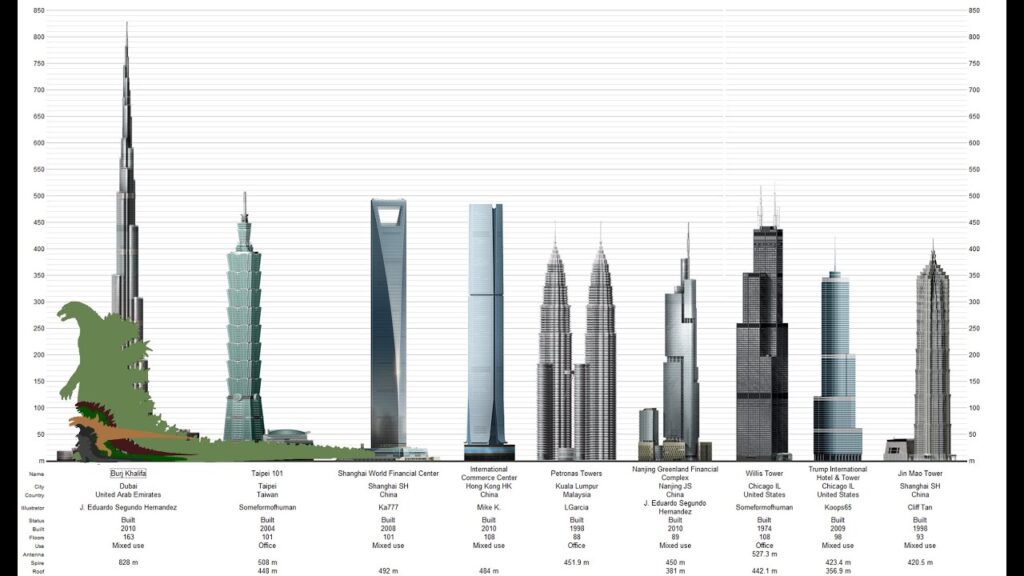
Tall buildings, towering over urban landscapes, have become synonymous with progress, wealth, and technological advancements. The concept of building upward, rather than outward, was born out of necessity due to the rapid urbanization and population growth of the late 19th century. Over time, skyscrapers evolved from merely functional structures to architectural masterpieces that demonstrate cutting-edge design and construction methods. They represent the intersection of engineering, architecture, and urban planning.
The transition from low-rise masonry buildings to steel-framed skyscrapers revolutionized urban construction. As steel framing and elevator technologies advanced, cities like Chicago and New York emerged as pioneers in skyscraper development. These early structures, though not tall by today’s standards, laid the groundwork for the modern high-rise buildings that now dominate skylines around the world. The race for the tallest building was not just about height; it was a reflection of human ambition, a desire to create structures that could withstand the forces of nature while serving as symbols of economic strength.
This article explores the evolution of skyscrapers, focusing on the significant milestones in design and construction. It examines how technological advancements, structural innovations, and aesthetic considerations have shaped the development of tall buildings, from the earliest steel-framed skyscrapers to the super-tall structures of the 21st century.
The Birth of Skyscrapers: The Late 19th Century
The late 19th century marked the birth of the skyscraper, a new building typology that would forever change the urban landscape. Cities like Chicago and New York, which were experiencing rapid population growth and land shortages, needed a solution that would allow for vertical expansion. The combination of steel-frame construction and the development of the elevator made this possible.
The Home Insurance Building in Chicago, completed in 1885, is often credited as the first skyscraper. Designed by William Le Baron Jenney, this 10-story building was revolutionary because it used a steel frame rather than thick masonry walls to support its weight. This structural innovation allowed the building to rise higher without the need for massive, space-consuming walls.
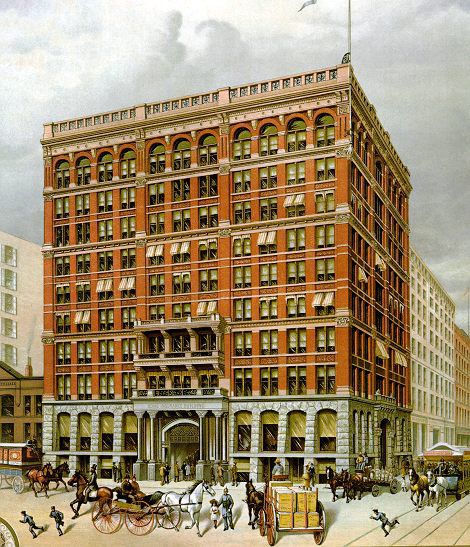
Key Design Elements
Early skyscrapers were primarily functional in design. Architects embraced the principles of the Chicago School of Architecture, which emphasized simplicity, structural expression, and the use of modern materials. These buildings featured steel skeletons that were clad in masonry to provide a visually appealing facade. The large windows and vertical emphasis of these buildings became defining characteristics of early skyscraper design.
The emphasis on practicality was further exemplified by the work of Louis Sullivan, who believed that “form follows function.” His designs focused on creating structures that were not only tall but also reflected their purpose. This philosophy would influence skyscraper design for decades to come, as architects sought to balance aesthetics with functionality.
Construction Methods
The construction of early skyscrapers relied heavily on manual labor. Workers assembled steel beams on-site using rivets and bolts, often at great heights and under dangerous conditions. The steel frame was the backbone of these buildings, and masonry was used to clad the exterior. Foundations were relatively shallow, as buildings were not yet tall enough to require deep foundation systems. Nevertheless, these early skyscrapers were engineering marvels that pushed the boundaries of what was possible at the time.
Skyscrapers in the Early 20th Century
The early 20th century saw a rapid expansion of skyscraper construction, particularly in New York City. The race to build taller and more iconic buildings led to innovations in both design and structural engineering. Buildings like the Chrysler Building (1930) and the Empire State Building (1931) became symbols of economic power and architectural achievement.
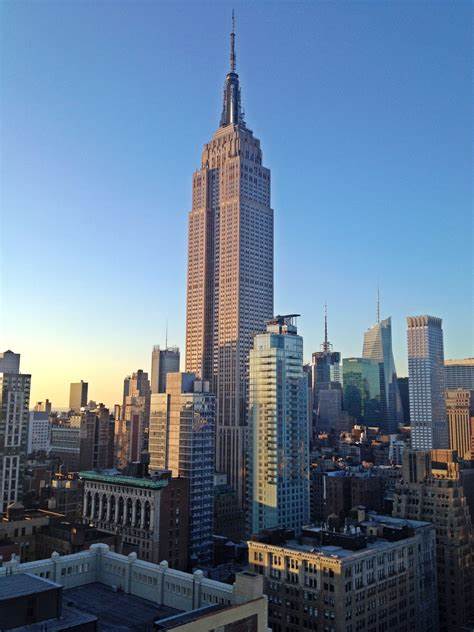
Key Design Trends
During this period, Art Deco became a popular architectural style for skyscrapers. Buildings were designed with setbacks, creating a tiered, tapering effect as they rose. This not only made the buildings more visually striking but also complied with zoning laws that aimed to reduce shadows cast on the streets below. The Chrysler Building, designed by William Van Alen, is a prime example of this style, with its decorative spire and geometric ornamentation.
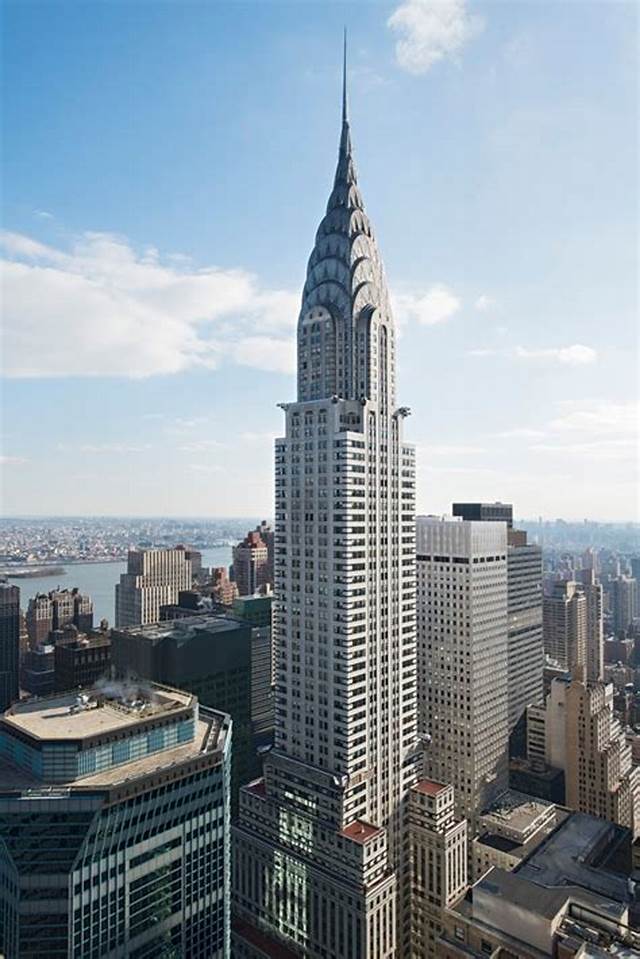
Architects also began to focus more on the overall aesthetic of skyscrapers. Tall buildings were no longer just functional; they were also designed to make a statement. This era saw the introduction of spires, crowns, and other decorative elements that gave skyscrapers a unique identity. The Empire State Building, for instance, became an enduring symbol of New York City’s skyline with its iconic Art Deco design.
Structural Innovations
The increasing height of skyscrapers posed new challenges for engineers, particularly in terms of wind loads. The introduction of wind bracing systems and lateral bracing techniques helped stabilize these tall structures. As buildings grew taller, they became more susceptible to wind forces, which could cause them to sway or even collapse. Engineers developed various methods, including braced frames and tuned mass dampers, to counteract the effects of wind.
See: Lateral Stability Systems of Tall Buildings
At the same time, advancements in materials technology allowed for the use of reinforced concrete in skyscraper construction. Reinforced concrete provided better fire resistance than steel, making buildings safer in the event of a fire. This material was particularly useful for constructing foundations and cores, which required both strength and durability.
Construction Methods
Construction methods during this period became more efficient and sophisticated. The Empire State Building, for example, was constructed in just 14 months—a remarkable feat considering its size. This was made possible by the use of prefabricated steel components, efficient project management, and a large workforce. Cranes lifted steel beams into place, while workers assembled them on-site, often under dangerous conditions.
Masonry continued to be used for exterior cladding, but new materials like terra cotta and aluminum were introduced to create more intricate and durable facades. The use of prefabricated components also became more common, allowing for faster and more cost-effective construction.
Post-War Era and Modernism (1950s–1970s)
The post-World War II era marked a shift in skyscraper design, as cities around the world began to embrace the International Style. This modernist approach rejected the ornate designs of the past in favor of sleek, minimalist structures. Skyscrapers became simpler in form, with glass and steel facades that emphasized functionality over decoration.
Key Design Trends
The International Style, championed by architects like Ludwig Mies van der Rohe and Le Corbusier, became the dominant architectural style for skyscrapers during this period. Buildings like the Seagram Building (1958) in New York City exemplify this style, with their clean lines, large glass windows, and lack of ornamentation. The focus was on creating efficient, functional spaces rather than decorative facades.
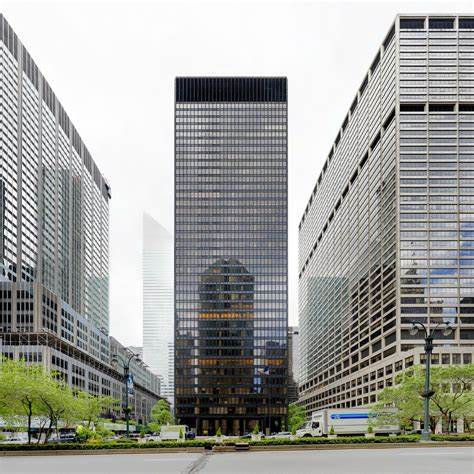
This era also saw the rise of the corporate skyscraper, as businesses sought to construct tall buildings that reflected their power and prestige. These buildings were often designed with open floor plans and flexible layouts, allowing companies to customize their office spaces as needed.
Structural Innovations
One of the most significant structural innovations of this era was the development of the tube structure, pioneered by Fazlur Rahman Khan in the 1960s. The tube structure allowed skyscrapers to reach new heights by using the exterior walls as a rigid, load-bearing “tube” that provided lateral stability. This system reduced the need for interior columns, creating larger, more open floor spaces.
The Willis Tower (formerly the Sears Tower), completed in 1973, is a prime example of this innovation. At the time of its completion, it was the tallest building in the world, standing at 1,450 feet. The tube structure made it possible to construct such a tall building without sacrificing structural integrity.
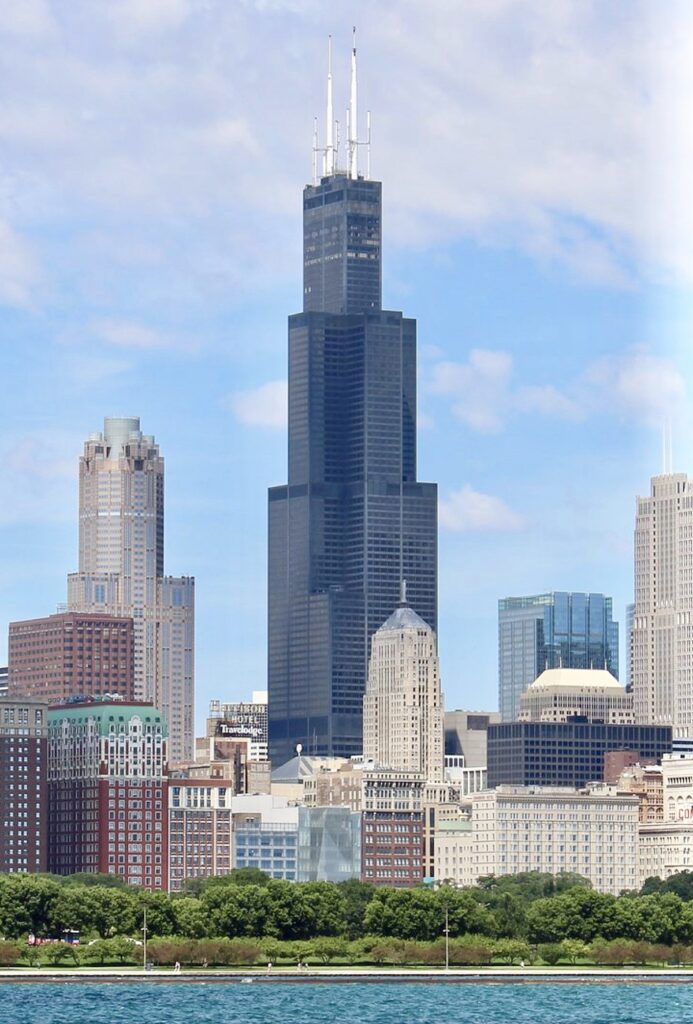
Construction Methods
Construction methods in the post-war era became more advanced, thanks to the introduction of new materials and technologies. Curtain wall systems, in which lightweight materials like glass and aluminum were attached to the steel frame, became standard. This not only sped up the construction process but also gave buildings a sleek, modern appearance.
The use of high-strength concrete and reinforced steel allowed for more flexible designs, enabling architects to experiment with different shapes and forms. Prefabrication also became more widespread, with components being manufactured off-site and then assembled on-site, reducing construction time and costs.
The Rise of Supertall Skyscrapers (21st Century)
The 21st century has seen the rise of supertall skyscrapers—buildings that exceed 300 meters in height. Iconic structures like the Burj Khalifa in Dubai, completed in 2010, have pushed the boundaries of what is possible in skyscraper design and construction. These buildings are not only feats of engineering but also symbols of national pride and economic power.
Key Design Trends
In the modern era, architects have embraced a wide range of design styles, from minimalist modernism to more organic, fluid forms inspired by nature. The Burj Khalifa, designed by Adrian Smith, features a tapering, spire-like design that mimics the shape of a desert flower. This design not only creates a visually striking silhouette but also helps reduce wind forces on the building.
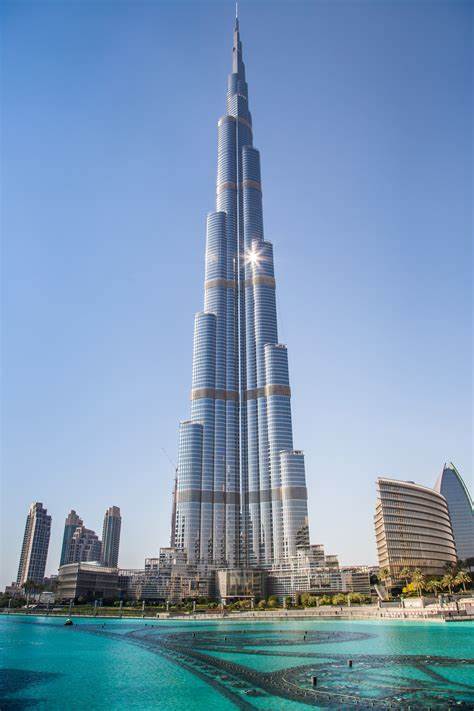
Sustainability has also become a key consideration in skyscraper design. Architects and engineers are increasingly focused on creating energy-efficient buildings that minimize their environmental impact. Features like double-skin facades, green roofs, and advanced building management systems are now common in new skyscrapers.
Structural Innovations
The structural challenges of building super-tall skyscrapers have led to new innovations in engineering. The buttressed core system, developed by Bill Baker used in the Burj Khalifa, provides stability by distributing the building’s weight across a series of interconnected vertical cores. This system allows the building to withstand high winds and seismic forces.
Wind tunnel testing has also become an essential part of the design process for super tall buildings. Engineers use scale models to test how wind will affect the building at various heights, allowing them to make adjustments to the design before construction begins. Tuned mass dampers, which counteract the building’s movement in high winds, are now commonly used in super tall structures.
Construction Methods
Construction methods for super tall skyscrapers have become increasingly sophisticated. Slipform construction, in which concrete is continuously poured into a moving formwork, allows for the rapid construction of tall buildings. This method was used in the construction of the Burj Khalifa, enabling workers to build one floor every three days.
The use of prefabricated modules and advanced building information modeling (BIM) has also streamlined the construction process, reducing the time and cost required to complete these massive projects. Innovations in high-strength steel and ultra-lightweight concrete have made it possible to build taller and more efficient structures than ever before.
The Future of Skyscrapers
As cities continue to grow and urban populations increase, the demand for tall buildings will only rise. However, the skyscrapers of the future will not only be defined by their height but also by their sustainability, resilience, and intelligence. The integration of smart technologies—such as sensors, artificial intelligence, and automated systems—will make buildings more efficient and adaptable.
The use of carbon-neutral materials and green building technologies will become increasingly important as architects and engineers strive to reduce the environmental impact of skyscrapers. Features like vertical gardens, solar panels, and energy-efficient HVAC systems will become standard in new high-rise developments.
In addition, advances in 3D printing and modular construction may revolutionize the way skyscrapers are built. These technologies could drastically reduce construction time and costs while allowing for greater flexibility in design.
Also See: Fundamental of Tall Building Design
Conclusion
The evolution of skyscrapers is a testament to human ingenuity and ambition. From the steel-framed buildings of the late 19th century to the super-tall structures of the 21st century, each generation of skyscrapers has pushed the boundaries of what is possible in design and construction. Advances in materials, structural systems, and construction methods have made it possible to build taller, safer, and more efficient buildings than ever before.
As we look to the future, skyscrapers will continue to evolve, driven by the need for sustainable, resilient, and smart buildings. The race for the tallest building may continue, but the focus will increasingly shift toward creating skyscrapers that are not only engineering marvels but also environmentally responsible and socially beneficial.